From the Spring 2013 issue of Dalhousie magazine.
Dalhousie and Canada are both approaching major milestones in the coming years: in 2017, Canada will celebrate its 150th anniversary, and then one year later Dalhousie will mark its bicentennial.
With Canada Day almost here, we take a look at just a handful of the university's major contributions to the country — ways that Dal has put itself, and Canada, on the map.
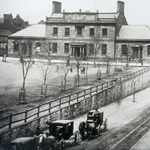 North America’s first non-denominational university
North America’s first non-denominational university
Cultural diversity in early 19th-century Nova Scotia didn’t mean quite the same thing that it means now. Back then, educational institutions were open only to those students who shared the Christian denomination of a school’s founders. Lord Dalhousie, however, insisted that Dal be open to students regardless of religion. Since then, fairness and diversity have been in Dal’s DNA, as evidenced — to cite just one example — by the many American Jewish medical students who studied here in the 1930s after experiencing discrimination at home.
 Canada’s oldest student newspaper
Canada’s oldest student newspaper
Founded in 1868, the Dalhousie Gazette is the oldest student newspaper in Canada. Its 145 years of continuous publishing is also the longest run of any student newspaper in North America. Its writers and editors have given Dal students a powerful presence on campus, a voice that’s echoed through a century and a half of changes.
 MBA education from the East Coast to the Far East
MBA education from the East Coast to the Far East
As part of a broader partnership between Chinese and Canadian educational institutions and governments, Dalhousie developed China’s first Western-style MBA program. Over a period of several years in the 1980s and '90s, Xiamen University sent faculty members to do MBAs at Dal. These professors brought their knowledge back to Xiamen and established a new MBA program, with some Dal professors making the trip overseas to teach higher-level classes in the program's early years.
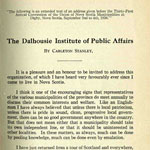 Taking it public
Taking it public
In 1936, Dalhousie launched Canada’s first Institute of Public Affairs, the brainchild of Dr. Lothar Richter, a professor of German who had left his homeland when Hitler came to power.
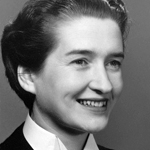 Bertha Wilson reigns Supreme
Bertha Wilson reigns Supreme
Bertha Wilson (LLB'58) shattered the legal glass ceiling when she was named the first woman to the Supreme Court of Canada in 1982. Wilson was an important figure in shaping the Charter of Rights and Freedoms and fought for gender equality in her profession.
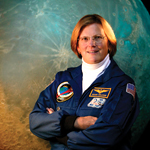 Kathryn Sullivan makes NASA history
Kathryn Sullivan makes NASA history
On October 11, 1984 — six years after completing her PhD in geology at Dal — New Jersey-born astronaut Katheryn Sullivan stepped out of a spacecraft and into history as the first American woman to perform a spacewalk. Demonstrating a satellite refueling system, Sullivan spent the next three hours outside the craft. She has spent the rest of her career as one of NASA’s most decorated astronauts, logging 532 hours in space, helping to deploy the Hubble Space Telescope and earning a place in the Astronaut Hall of Fame.
 Going smoke-free
Going smoke-free
Dalhousie sparked the trend toward smoke-free campuses in 2003 when it became the first Canadian university to ban smoking.
 Canada’s first College of Sustainability
Canada’s first College of Sustainability
September 2009 marked the first classes in Dal’s Environment, Sustainability and Society program, offered by the brand-new College of Sustainability.
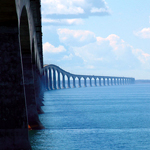 Building bridges
Building bridges
The Confederation Bridge, opened in 1997, connects New Brunswick to Prince Edward Island and at 12.9 kilometres is the longest bridge in the world that crosses ice-covered water. Civil and Resource Engineering professors and graduate students from Dalhousie helped guide earthquake and material analysis in the design and building stages, and continue to play an important role in monitoring ice abrasion on the structure’s ice shields.
 Pioneering northern nursing
Pioneering northern nursing
In 1968, Dalhousie’s School of Nursing debuted its Outpost Nursing Program. It was the first post-graduate program in Canada designed to train nurses specifically for work in remote areas. Dal’s program remained the only one of its kind for more than a decade.
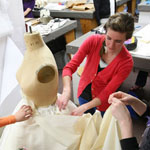 Getting into costume
Getting into costume
Dal’s Department of Theatre launched its Costume Studies Program in 1976, and began offering a four-year honours degree in 2005. It’s the only program of its kind in North America, so students across Canada and the U.S. flock to our frocks.
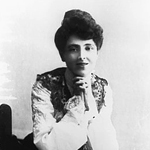 Inspiring Anne
Inspiring Anne
Lucy Maud Montgomery studied at Dal for just one year, 1895-96, but made the most of her time here by penning a witty op-ed for the Dalhousie Gazette and gathering inspiration for her internationally celebrated Anne books. A character in the Green Gables universe, Gilbert Blythe, was reportedly based on Montgomery’s fellow student and future Dal registrar Murray Macneill.
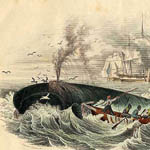 Boosting Melville
Boosting Melville
Archibald MacMechan arrived at Dalhousie in the 1890s as a young, inexperienced English professor and over the next 40 years became one of the towering figures in university history. But his influence was hardly restricted to campus. He wrote frequently about his love of Nova Scotia, representing the province to Canada and the world. And his 1899 essay “The Best Sea Story Ever Written,” an ode to Herman Melville’s Moby Dick, boosted that author’s international reputation and inspired widespread interest in Melville’s work.
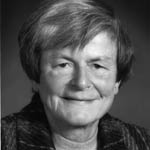 Mother of the Sea
Mother of the Sea
Elisabeth Mann Borgese earned her nickname “Mother of the Sea” for creating the International Ocean Institute — which is headquartered at Dalhousie — in 1972 and playing a key role in establishing the United Nations Law of the Sea 10 years later. She became a Dal political science professor in 1979 and delivered lectures and workshops well into her 80s, earning the Order of Canada along the way. Her institute remains an influential voice on the topic of ocean sustainability, and the IOI draws participants from around the globe to its three-week summer seminars.
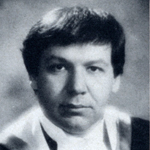 Legal eagles
Legal eagles
Lesra Martin (LLB’97) helped to free Rubin “Hurricane” Carter. Michael Leir (LLB’74) led Canada’s legal team in implementing NAFTA. Ronald St. John MacDonald (LLB’t52, Dean of Law 1972-79) founded the Canadian Council on International Law. Toss in provincial premiers like Darrell Dexter (left, LLB’87) and Prime Ministers like R.B. Bennett (LLB 1893), and it’s clear that Dalhousie’s law school has turned out influential graduates.
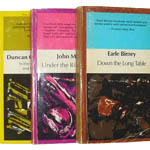 Celebrating Canadian literature
Celebrating Canadian literature
In 1958, literary critic and future Dalhousie English professor Malcolm Ross founded, along with publisher Jack McClelland, the New Canadian Library. Edited for several years by Ross, the NCL was the first paperback imprint devoted strictly to Canadian literature and over time helped introduce readers to authors like Margaret Atwood and Michael Ondaatje. Ross’s passion for literature influenced Dalhousie students for 14 years and contributed to the development of Canada’s literary identity.
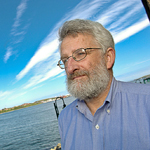 Understanding ozone
Understanding ozone
In the 1980s and '90s, before climate change dominated the environmental discussion, human-caused ozone depletion was arguably the most talked-about danger. Dalhousie oceanography professor John Cullen made a critical contribution to the cause with research that demonstrated how photosynthetic plankton were harmed by increased ultraviolet radiation. Dr. Cullen’s work furthered global understanding of the ozone issue and helped establish Dal as a scientific leader.
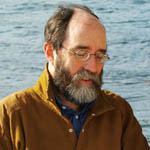 Ocean tracker
Ocean tracker
Ransom Myers became Dalhousie’s first Killam Chair in Ocean Studies in 1997 and spent the next 10 years as one of the world’s most respected researchers of, and passionate advocates for, sea life. Myers took his warnings of cod and tuna overfishing to both the scientific community and the media. He passed away in 2007, but his legacy continues in the work of the Dalhousie-based Ocean Tracking Network, which analyzes the effects of environmental factors like climate change on marine life stocks and migration.
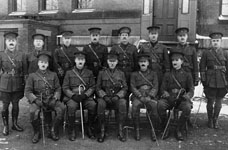 Dal Doctors at war
Dal Doctors at war
Dalhousie’s medical faculty played a vital role in supporting the Allied effort in the First World War. Its professors, senior students and nurses staffed Stationary Hospital No. 7, a critical treatment stage between the battlefield and the hospital. No. 7 was initially located in England, then moved closer to the front lines in France, treating Canadian soldiers and German prisoners. Colonel John Stewart, part of the No. 7 effort, returned and became Dean of Medicine from 1919-1932.
 On the Rhodes
On the Rhodes
In Canada, only Ontario and Quebec students could become Rhodes Scholars, until Dalhousie led the effort to broaden the scope of eligibility. Dal’s first Rhodes Scholar was named in 1903. In all, we’ve sent 87 Rhodes Scholars to Oxford.
 O Christmas tree
O Christmas tree
The world’s only Christmas Tree Research Centre is located at Dalhousie’s Agricultural Campus. Opened in 2010, the centre aids the Christmas tree industry by investigating, among other things, what causes trees to lose needles.

